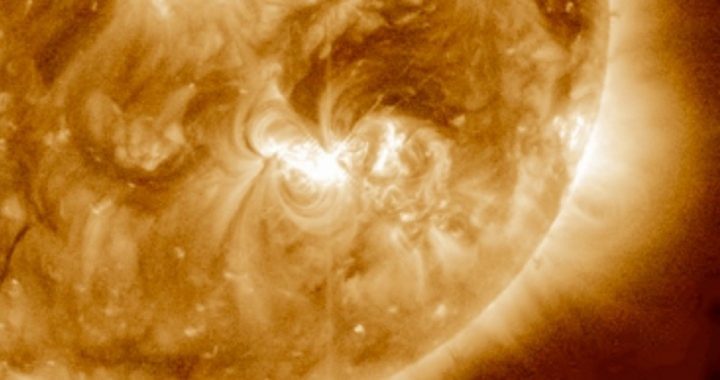
Solar flares erupting from a giant sunspot group during the first week of July were certainly on a much larger scale than America’s fireworks displays celebrating the Fourth of July. The solar fireworks hurled charged particles through millions of miles of space, with one blast so intense that it temporarily disrupted radio communications in Europe. Though the charged particles from the sunspot group, labeled by NASA AR1515, did not head directly toward Earth, the solar fireworks were nevertheless sufficient to have an effect. The velocity of the particles was 700 miles per second, and the temperature on the surface of the sun where the activity was generated is estimated to be a mind-numbing 100 million degrees Celsius.
Dr. Matthew Penn of Arizona’s National Solar Observatory explained:
Because the sun is becoming more active, it will have an impact on millions of people. Sunspots can cause the biggest and most damaging space storms that occur. During the next two years, we are expecting the number of sunspots visible on the sun to reach a maximum. We know that sunspots are the source of a lot of space weather and solar storms, so we expect a larger number of solar storms here at the Earth.
And as Dr. Madhulika Guhathakurta, the lead scientist for NASA’s Living With a Star program, observed recently:
We are going toward the peak of the solar cycle right now. It typically goes through an 11-year cycle in which the magnetic field in the sun goes from minimum to maximum. Right now, we’re rising toward the maximum and during that time, the number of sunspots increases. Everyone is watching the sunspot because it has the potential to produce strong flares, but that doesn’t necessarily mean we’re going to have a severe magnetic storm.
We can’t predict anything ahead of time. We have to wait for the particles to arrive at a certain point where we have a spacecraft and this measures the particles and the orientation of the magnetic fields. That’s when we’ll know if the particles will penetrate through. There’s really nothing to be afraid of. It’s typically only electronics and machinery that are affected.
The recent communications disruption in Europe is not that uncommon on Earth. For instance, in 1989 a similar solar flare left six million people in Quebec without electricity. Scientists estimate that 2013 will be a particularly violent period for solar flares and their attendant effects on humanity. May of next year has been designated the peak of the activity, when scientists are hoping to learn a great deal more about sunspots and solar flares.
The radiation of solar flares can cause spectacular displays on Earth. The greatest of these in modern history occurred on January 25, 1938 when the sky over Europe glowed red and green for almost seven hours. Some concerned observers actually called fire departments, assuming that the brilliant lights had been caused by a massive nearby fire.
Solar flares can also affect satellite communications, upon which much of human technology depends. Such interference may last as long as half an hour.
Photo: NASA



